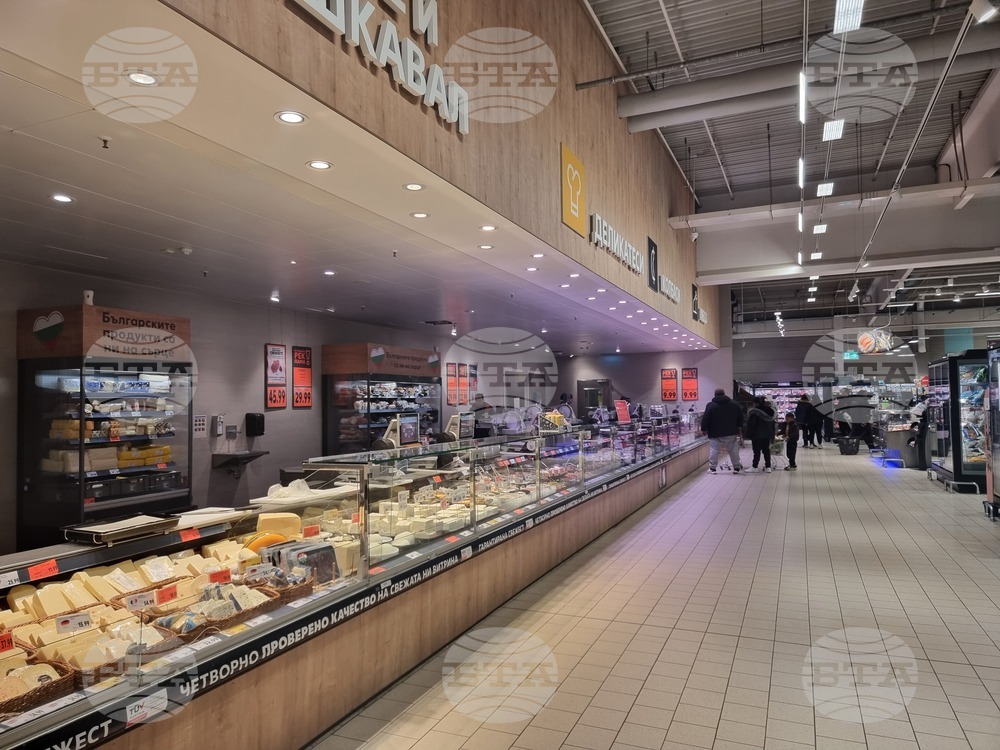site.btaLarge Retail Chains Comply with Dual Pricing Requirement, Some Smaller Businesses Avail Themselves of Grace Period


As of August 8, prices in Bulgaria must be displayed in both Bulgarian leva and euro in line with amendments to the Introduction of the Euro in the Republic of Bulgaria Act, which were conclusively adopted by the National Assembly on July 30 and published in the State Gazette on August 8.
The dual pricing period will last for one year, ending on August 8, 2026. During this time, prices in leva and euro must be shown side by side, clearly and legibly, using the same font size, type, and colour. The currency indicator must also be printed in the same format.
The amended law provides a two-month grace period during which regulators will not impose fines, giving businesses time to prepare. During this period, the Consumer Protection Commission, the National Revenue Agency, the Bulgarian National Bank, and the Financial Supervision Commission may only issue written warnings for violations, such as failing to display dual prices in shops or on receipts. From October 8, 2025, regulators will be able to issue fines ranging from BGN 5,000 to BGN 1 million.
A BTA survey across the country has found that large retail chains have largely complied with the dual pricing requirement, as have most small businesses. Some, however, are still waiting to implement the changes.
In Pernik, prices in both currencies are handwritten on cardboard signs by market traders selling seasonal fruit and vegetables.
In Haskovo, major retailers introduced dual pricing over a month ago, and customers are already accustomed to the format.
In Samokov, all municipal fees have already been converted, although euro payments will only be accepted from 1 January 2026.
In Vratsa, even small vendors at snack stalls and local markets have adopted dual pricing.
In Troyan, pharmacies, fast-food outlets, restaurants, and shops selling household goods are also compliant.
In Montana, most retailers have updated their price tags, but some small neighbourhood shops have not. Some owners admitted they were unaware of the requirement, had forgotten, or planned to comply later.
In Plovdiv, small shops are relying on the grace period. According to a local shopkeeper, most customers aren't bothered by the new format.
The situation is similar in Kyustendil, where a hardware shop owner said it took six employees nearly a month to label all items due to the volume of goods. She expressed concerns about operations in January.
In Lovech, most labels in local shops now include both currencies, except for some seasonal items nearing the end of their sale period.
In Kardzhali, smaller shops and vendors at the vegetable market still write prices by hand.
In Targovishte, the requirement is widely followed, and price information is clearly displayed on products or signs.
In Pleven, most outlets, restaurants, beauty salons, and markets have introduced dual pricing, though some merchants plan to use the grace period.
In Ruse, a wide range of businesses, including bookshops, pharmacies, opticians, and gift shops, have implemented dual pricing, though some are struggling to update labels.
In Varna, the vast majority of businesses have adopted the practice. Even places of worship and restaurants with online services are displaying prices in both currencies. Public transport and parking apps also show dual prices.
In Vidin, practices vary. Some shops list prices in levs on the top line and euros below, while others do the opposite. Many smaller shops and market stalls still use handwritten labels.
In Kazanlak, a 71-year-old resident criticised shops that display euro prices more prominently, suggesting it could mislead customers. Other pensioners echoed the confusion caused by the new labels.
In Veliko Tarnovo, most businesses are compliant, while others are using the grace period. Staff shortages are cited as a challenge in updating labels.
In Svishtov, major chains are compliant, but smaller local shops are only partially so.
In Shumen, some clothing stores and vendors selling cold drinks have yet to include euro prices. Coffee vending machines also only display prices in levs.
At Stara Zagora’s central fruit and vegetable market, only a few vendors display dual prices. They say they’ll comply soon, taking advantage of the grace period.
In Gabrovo, traders are ready with dual pricing but are concerned about the reconfiguration of cash registers.
In Yambol, practices vary—some cafés and restaurants use menus with both currencies, others only in levs. In some places, staff verbally provide euro equivalents.
In Blagoevgrad, most food shops and eateries are compliant. One florist is still updating labels, expecting full compliance by the end of September.
In Sliven, traders complain about the burden of updating point-of-sale systems and the time-consuming nature of relabelling large product ranges.
In Burgas, large stores have already introduced dual pricing, but many smaller businesses are waiting until October.
In Dobrich, many market sellers have yet to display euro prices. Entry fees at the regional museum sites are now listed in both currencies.
In Razgrad, large chains and hospitality venues have implemented dual pricing.
In Panagyurishte and Strelcha, the process is gradually underway. According to Radoslava Etova, a sales assistant in the village of Buta, the change has been uncomfortable for both traders and customers.
/KT, VE/
news.modal.header
news.modal.text